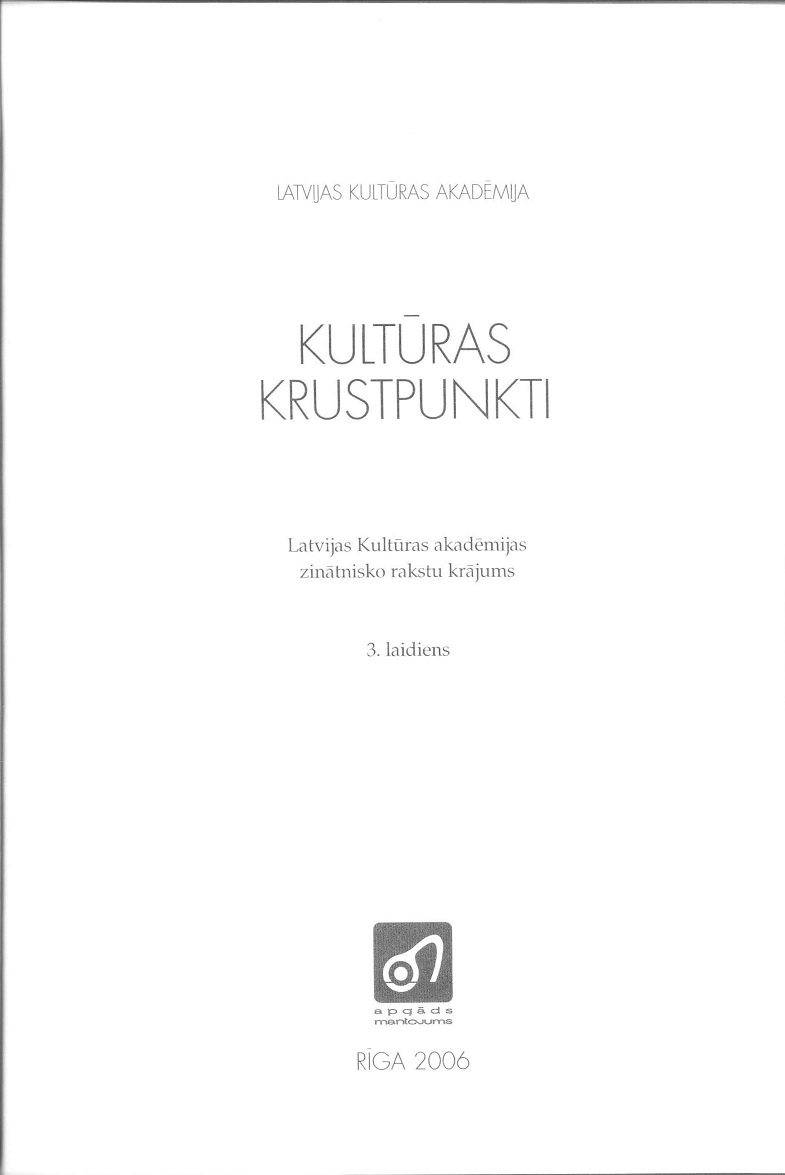Baltu pasaules modeļa atspoguļojuma iespējamās paralēles folklorā un arheoloģiskajā ornamentā
Possible Reflections of the Baltic World Model in Folklore and Designs on Archaeological Artefacts
Author(s): Baiba VaskaContributor(s): Valdis Bērziņš (Translator)
Subject(s): Archaeology, Cultural history, Customs / Folklore, Ethnohistory, History of ideas, Social history, Ancient World
Published by: Latvijas Kultūras akadēmija
Keywords: Baltic world model; folklore; archaeology; artefacts; ancient cults; structure of the world; culture; idea of the world;
Summary/Abstract: Both Latvian folklore and the ancient design of the Baltic tribes preserve reflections of ancient cults and ideas concerning the structure of the world. Nowadays, it is generally accepted that ancient design, apart from its decorative aspect, also includes information in the form of signs and symbols, especially in non-literate cultures. Interpretations of design make use of information from folklore and from the traditional mode of life in the culture, as well as from historical accounts by contemporaries. In this paper, a comparison is made between the world order as interpreted from folklore and from the Iron Age archaeological material, taking the model of the world tree, as represented in the cultures of many peoples of the world, as a basis. The world tree appears in Latvian folksongs as a deciduous tree at whose tip the' sun sets, while in folktales it is seen in the form of a beanstalk by which one can climb to heaven. In design, this could be represented by the vertical herringbone design on 9th century Latgallian cuff-shaped armbands. The heav-only mountain appears in folklore as a mountain of ice or glass, with the sun sit-tting at the summit. In the archaeological material, this could be represented by hi upturned chevron with a circle at its tip. The sun is personified in folklore, md is seen as driving a cart or a boat. In the archaeological material, the sun is regarded as represented by the depictions of wheels and concentric circles, as. well as by the swastika. The moon, which appears in folklore as a warrior, is, represented by lunulae, usually connected with female dress. Lunulae also occur in the designs on horse-trappings. In certain cases, these are found on Prussian material from the Roman Period, while in Europe they came into fashion again in the 18th century. An 18th century lunula from a horse-fitting has been found in the ruins of Turaida Castle. Perhaps the folklore tradition relates to this period. Star motifs are also represented in the archaeological material from East Prussia. In Latvia, they are seen on the 12th century star brooches from Eastern Latvia. In folklore, the planet Venus is personified as Auseklis. It is perceived as two separate stars: the morning star and the evening star. It can also appear in the form of two horses, an aspect that serves to link it with the cult of twins, represented in folklore by the Sons of God. The cult of twins is also connected with the folklore figure Jumis, represented by two ears of grain growing on a single stalk. Jumis is unmistakeably connected with fertility cults. Traditionally, the figure of Jumis is seen in design in a motif with two upturned chevrons, their adjacent lines overlapping. Such motifs occur already in the early farming cultures of the Balkans, in the 5th mill. BC.
Journal: Culture Crossroads
- Issue Year: 3/2006
- Issue No: 2
- Page Range: 91-112
- Page Count: 22
- Language: Latvian

